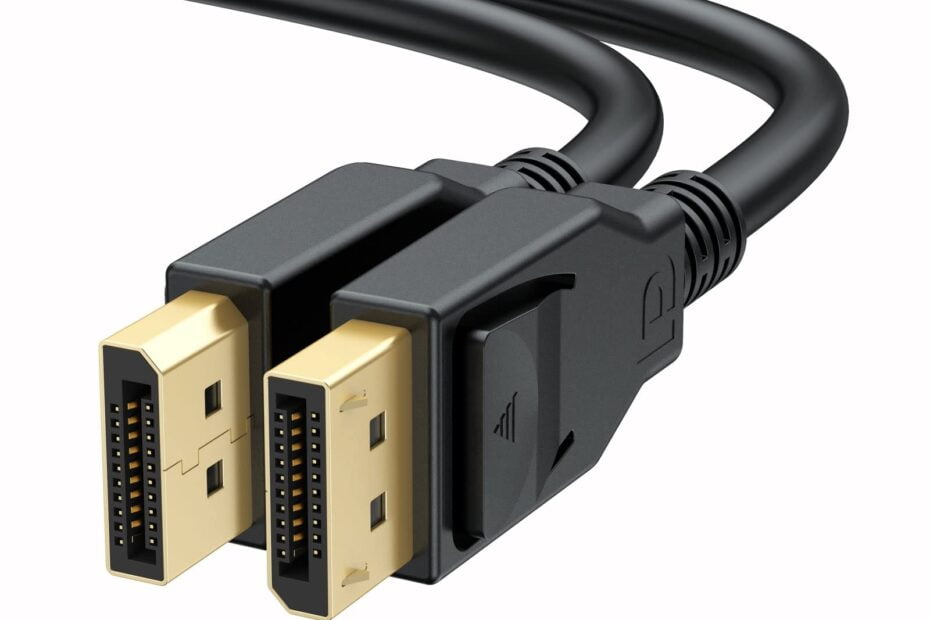Last Updated on December 5, 2022 by Tech Questions
There are many factors to consider when choosing a computer monitor. Two important considerations are resolution and refresh rate. Resolution is the number of pixels on the screen, and refresh rate is the number of times per second that the image is refreshed.
A 1080P 240Hz monitor has a resolution of 1080P (1920×1080) and a refresh rate of 240Hz, while a 1440P 144Hz monitor has a resolution of 1440P (2560×1440) and a refresh rate of 144Hz. Both are excellent choices for gamers who want high-quality visuals, but which one is better? The answer depends on several factors.
First, consider what type of games you most often play. If you tend to play fast-paced shooters or other action games, then you may want to go with the higher refresh rate of the 1080P 240Hz monitor. On the other hand, if you prefer slower-paced games or if you’re more interested in graphics than speed, then the 1440P 144Hz monitor might be a better option for you.
Second, think about your budget. The 1440P 144Hz monitor will generally be more expensive than the 1080P 240Hz model, so if cost is a concern, then you’ll probably want to stick with the latter.
When it comes to choosing a monitor, there are a lot of options out there. But one of the most important decisions you’ll need to make is between a 1080p 240hz or 1440p 144hz monitor. So, which one is right for you?
If you’re a competitive gamer, then a 1080p 240hz monitor is probably the way to go. The higher refresh rate will give you an advantage in fast-paced games, and the lower resolution won’t be as much of an issue since you’ll be focused on the action rather than the details. Plus, most top-tier gaming monitors are 1080p anyway.
However, if you’re more concerned with image quality than speed, then 1440p 144hz is the better option. The higher resolution will give you sharper and more detailed images, while the144hz refresh rate will still be plenty fast for most gamers. Plus, newer graphics cards are often better equipped to handle 1440p resolutions anyway.
So, which one should you choose? Ultimately, it depends on your needs and preferences. If you want the best possible gaming experience, go with a 1080p 240hz monitor.
But if image quality is your top priority, then go with a 1440p 144hz monitor instead.
WHAT IS BETTER?? 1080p at 240hz VS 1440p at 144hz Gaming Monitors
Is It Better to Have 240Hz Or 1440P?
There is no simple answer to the question of whether it is better to have a 240Hz or 1440p monitor. The decision depends on a variety of factors, including what you will be using your monitor for and what other hardware you have. For gamers, the choice between 240Hz and 1440p usually comes down to two things: refresh rate and resolution.
A higher refresh rate means that your screen will update more frequently, which can be helpful if you are playing fast-paced games or want to avoid motion blur. On the other hand, a higher resolution means that your image will be sharper and more detailed. If you are mostly interested in gaming, then a 240Hz monitor may be the better choice.
However, if you want to do other things like video editing or graphic design work, then a 1440p monitor may give you a better experience. Ultimately, the decision comes down to personal preference and what you need from your monitor.
Is It Worth Getting 240Hz Monitor Over 144Hz?
When it comes to choosing a monitor, the refresh rate is one of the most important specs to look at. A higher refresh rate means that your screen will update more frequently, which can be beneficial for gaming and other fast-paced activities. So, is it worth upgrading from a 144Hz monitor to a 240Hz monitor?
The answer isn’t necessarily straightforward. On one hand, a 240Hz refresh rate can provide a smoother and more responsive experience than 144Hz. However, it’s also worth noting that not all games and applications are able to take advantage of such high refresh rates.
In addition, there’s also the matter of cost; 240Hz monitors tend to be significantly more expensive than their 144Hz counterparts. Ultimately, whether or not upgrading to a 240Hz monitor is worth it depends on your needs and budget. If you’re looking for the absolute best possible gaming experience and are willing to pay for it, then go for it.
However, if you’re on a tighter budget or don’t think you’ll see much benefit from the extra speed, then stick with 144Hz.
Is 1440P 240Hz Monitor Worth It?
There are a few things to consider when deciding if a 1440p 240Hz monitor is worth it. The main factor is what you will be using the monitor for. If you are a casual gamer or just need a basic display for work, then a 1440p 60Hz monitor would suffice and save you some money.
However, if you are looking for a top-of-the-line gaming experience with fast refresh rates and smooth gameplay, then a 1440p 240Hz monitor would be worth the extra cost. Another consideration is whether your computer can handle the higher resolution and frame rate. A powerful graphics card is necessary to take full advantage of what a 1440p 240Hz monitor has to offer.
Overall, it comes down to personal preference and needs. If you have the budget and want the best gaming experience possible, then go for it! Otherwise, stick with a lower resolution or refresh rate.
Is 165Hz 1440P Better Than 240Hz 1080P?
There’s a lot to unpack here in terms of what “better” means. In general, higher resolution is better than lower resolution and higher refresh rate is better than lower refresh rate. However, there are some important caveats to keep in mind.
For one thing, 165hz 1440p and 240hz 1080p are not directly comparable since they’re different resolutions. Generally speaking, you’ll get more frames per second at the lower resolution with the higher refresh rate. So if raw frame rate is your priority, then 165hz 1440p is probably the way to go.
However, it’s worth noting that you’ll also get a sharper image at 1440p compared to 1080p. And while frame rates above 60fps can be nice, they’re not necessarily essential for everyone. So if image quality is your top priority, then you might want to stick with the higher resolution even if it means sacrificing some frames per second.
Ultimately, it comes down to what’s most important to you as the individual viewer. If raw speed is your thing, then go for the high refresh rate at a lower resolution. But if you care more about image quality, then opt for the higher resolution even if it means a slightly slower frame rate.

1440P 144Hz Or 1080P 240Hz Reddit
If you’re a PC gamer, then you know that choosing the right monitor is crucial for getting the most out of your gaming experience. With so many options on the market, it can be tough to decide which one is right for you. If you’re looking for a high-quality gaming experience, then you might be wondering if 1440p 144hz or 1080p 240hz is the better option.
The answer to this question depends on a few factors. First, let’s take a look at what each option offers. 1440p 144hz monitors offer a resolution of 2560×1440 and a refresh rate of 144hz.
This means that they can display up to 1440p resolution at 144 frames per second. On the other hand, 1080p 240hz monitors offer a resolution of 1920×1080 and a refresh rate of 240hz. This means that they can display up to 1080p resolution at 240 frames per second.
So, which one should you choose? It really depends on what you’re looking for in a gaming monitor. If you want the best possible image quality, then 1440p 144hz is the way to go.
However, if you’re more concerned with smooth gameplay and don’t mind sacrificing some graphical fidelity, then 1080p 240hz may be the better option for you.
1080P 240Hz Vs 1440P 144Hz Warzone
The debate between 1080p 240Hz and 1440p 144Hz has been a long and heated one. Each side has their own pros and cons, so it can be tough to decide which is the best option for you. In this blog post, we’ll break down each option so you can make an informed decision for your next Warzone match.
1080p 240Hz Pros:
- Higher frame rate means smoother gameplay and less motion blur.
- Lower input lag compared to lower refresh rate monitors.
- Ability to see small details more clearly due to the higher resolution.
- Generally cheaper than 1440p 144Hz monitors.
1080p 240Hz Cons:
More demanding on your PC’s hardware, meaning you may need to upgrade your GPU to get the most out of it.
Can be harder on your eyes due to the higher resolution, leading to eye fatigue after long gaming sessions.
1080P 144Hz Vs 1440P 144Hz
There are a lot of factors to consider when choosing between a 1080p 144Hz and 1440p 144Hz monitor. The most important factor is what you plan to use the monitor for. If you’re a competitive gamer, then the extra pixels and frame rate of the 1440p 144Hz option will be worth the investment.
However, if you’re just looking for a great all-around gaming experience, then the 1080p 144Hz option will be more than enough. Here’s a breakdown of some of the other key differences between these two options: Resolution: Obviously, the biggest difference here is resolution.
A 1440p monitor has nearly double the number of pixels as a 1080p monitor, so everything will look sharper on a 1440p screen. However, this also means that your graphics card will have to work harder to render all those extra pixels, which can impact performance. Refresh Rate: Both monitors offer a refresh rate of 144Hz, which is great for gamers who want smooth gameplay without any screen tearing.
However, there are some advantages to having a higher refresh rate like 240Hz or even 360Hz. Those higher rates can provide an even smoother gaming experience, but they come at the cost of lower image quality since each frame isn’t given as much time to render fully. So if you’re looking for pure performance without worrying about image quality too much, go with a higher refresh rate.
Otherwise,144Hz is plenty for most gamers. Response Time: This is another important consideration for gamers who want smooth gameplay without any ghosting or blurring effects. A faster response time means that each pixel can change colors more quickly, resulting in less blur during fast-paced action scenes.
The response time on both monitors is 1ms GTG (gray to gray), which is about as fast as it gets and should be plenty for even the most hardcore gamers out there.
Conclusion
There’s a lot to consider when choosing between a 1080P 240Hz and 1440P 144Hz monitor. Both have their pros and cons, so it really depends on what you’re looking for in a monitor. 1080P monitors offer Full HD resolution, while 1440P monitors offer Quad HD resolution.
1080P monitors have a higher refresh rate, while 1440P monitors have a lower refresh rate. both types of monitors are capable of displaying high-quality images and videos. The main difference between the two is that 1080P monitors are better for gaming because of their higher refresh rates, while 1440P monitors are better for watching movies and TV shows or working with multimedia because of their higher resolutions.
I am a tech enthusiast who loves to write about the latest trends in the tech world. I am also a big fan of computer gaming and enjoy spending my free time tinkering with new software and hardware. I believe that technology can change the world for the better and I am always excited to learn about new developments in this field.
